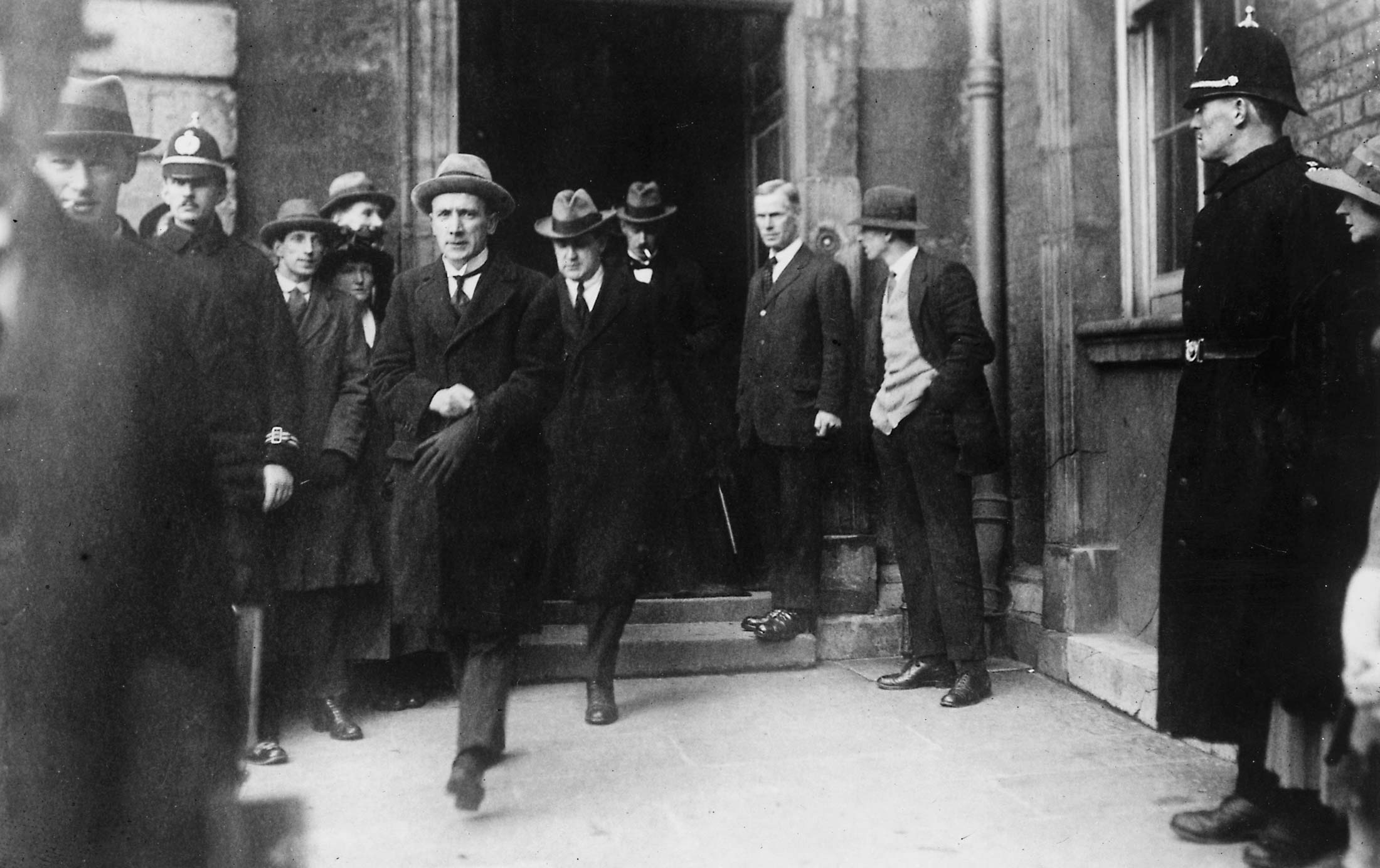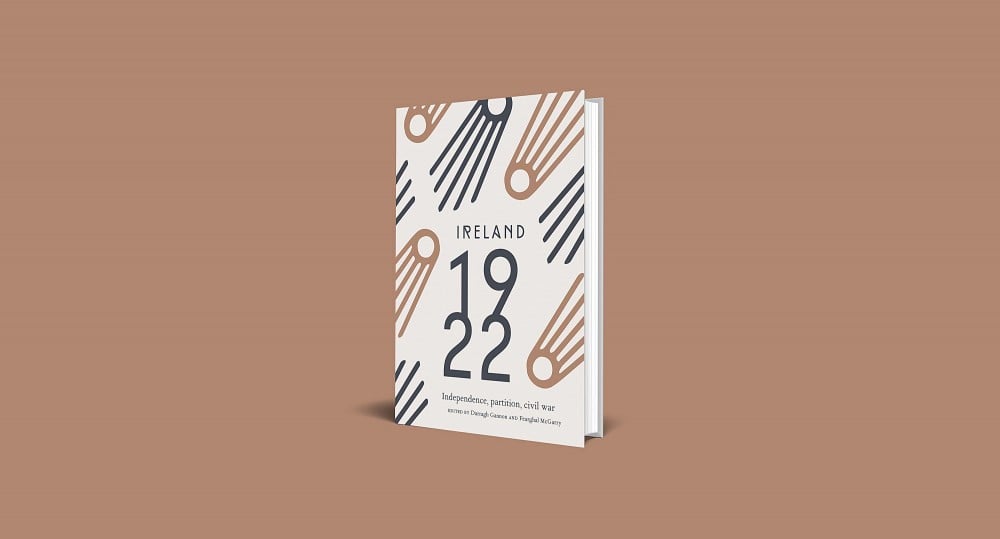16 January 1922: The ‘Surrender of Dublin Castle’
Administering Ireland
By Martin Maguire
In the history of the Irish revolution of 1916–21 it is the IRA campaign that attracts most attention. It is arguable, however, that the decision of the Sinn Féin candidates elected in the December 1918 general election to assemble in Dublin’s Mansion House in January 1919 and to declare themselves, as Dáil Éireann, the legitimate government in Ireland, was in fact the decisive revolutionary action. In a strategy originally devised by Arthur Griffith, Dáil Éireann gave a state form to the historic demands of Irish nationalism for separation. Nationalist resistance to the British state was to be expressed, not through riot and rebellion, but through the establishment of an Irish rival state. Popular support for the IRA campaign was largely unquantifiable whereas support for Dáil Éireann could be measured by the number of votes won in local and general elections. The emphasis on a state-centred revolutionary struggle necessarily focuses on the role of the civil service, rather than the soldiers, in both the British and revolutionary counter-state administrations.
On 16 January 1922 a Dáil Éireann delegation, led by Michael Collins, entered the Privy Council chamber in the upper yard of Dublin Castle and handed a signed copy of the Treaty to Viceroy FitzAlan and thus became the Provisional Government of Saorstát Éireann. The Provisional Government then returned to the Mansion House, announced it had accepted the ‘surrender of Dublin Castle’ and issued its first directive ordering that ‘all Public Servants and functionaries hitherto under the authority of the British Government shall continue to carry out their functions unless and until otherwise ordered by us’. The Provisional Government also prohibited ‘the transfer, or dismissal of any officer, servant, employee or functionary of the state or the removal of any records, documents or correspondence’. Three days later the Provisional Government took over the existing forty-eight departments and offices of the Castle administration, announcing that it had ‘appointed certain members and others to direct their activities and to be responsible to that Government for their efficient conduct and maintenance’.¹ The committee charged under the 1920 Government of Ireland Act with partitioning the civil service was ordered to cease meeting. For the civil servants of the Irish administration, the Union had come to an end: London was no longer in charge, and they were now in the hands of a native government. While Churchill might bluster that the Provisional Government had no legal authority to act as it did, the British government had no choice but to accept Griffith’s and Collins’s interpretation of the Treaty.²
The Provisional Government had now to assimilate the inherited Castle administration into the Dáil administration while dealing with the wellorganised civil servants themselves. In May 1920 Warren Fisher, permanent secretary of the Treasury, had been sent to investigate the Castle administration. His conclusion that the government of Ireland was ‘woodenly stupid’ justified despatching a select group of English civil servants led by John Anderson, chairman of the Board of Inland Revenue, to take over the civil administration in the Castle.³ There was already a well-founded suspicion in London that, rather than being woodenly stupid, a group of ‘die-hard’ unionist senior civil servants in the Castle administration was deliberately working to create conditions in which any political settlement would become impossible, necessitating martial law.⁴ The advice of the Anderson team shifted the terms of the debate that was then taking place in Cabinet away from the ‘diehards’, who were prepared to impose military rule, towards those committed to maintaining civil government. It was a close-run contest, and Ireland might well have come under a military regime rather than self-government.
Immediately the Treaty was approved, representatives of the new ‘Conference of All Associations of Irish Civil Servants’ introduced themselves to the Provisional Government. The civil servants signalled that they were enthusiastic about serving a native government and demanded nothing more than an assurance of ‘no worsening of conditions’. They hoped for a civil service that reflected the Sinn Féin ideal of a ‘one-grade’ administration free of sectarian discrimination and the English ‘caste’ system of hierarchical classes.⁵
By the time of the Treaty, in contrast with an administration in Dublin Castle that was stained with militarism, Dáil Éireann basked in the general acceptance of the Dáil courts and police, a local government department that was pushing through reforms, an energetic programme of industrial development and a thoroughly modern propaganda department. The Dáil administration, organised in functional departments under political ministers answerable to the Dáil, also looked more modern than that of the Castle’s autonomous boards. The key department was Finance under Michael Collins, controlling recruitment and payment of all the civil servants of the counter-state. As late as June 1922 the Provisional Government, regarding the inherited civil service with suspicion, was still planning a process by which the Dáil administration would take over and assimilate the Castle civil service. The outbreak of civil war in June prevented the sweeping changes that were being planned for the Irish administration.⁶ From that point on the Provisional Government had to assert control not only over the Castle administration but also over the remnants of the Dáil departments. The legitimacy of the Provisional Government was challenged by some within the Dáil administration, and there were instances of insubordination and refusal to obey instructions. In contrast, whatever the private sentiments of individual civil servants, the Castle administration accepted the legitimacy of the Provisional Government. Plans to construct a completely new apparatus were abandoned and the civil service of the Dáil was assimilated into the old Castle administration; the reverse of what was originally intended.
As the Provisional Government concentrated on the growing military threat of the anti-Treaty IRA, its attention to the development of civil government wavered as the leading figures, especially Collins, donned military uniform. The survival of the new state now depended on its army rather than civil government. With the death of Griffith, and then of Collins, it lost its visionaries, but also reverted to civil control. Thoughts of building a new and national civil service were abandoned. Contemporaries believed that the handover on 16 January would be a day remembered by future generations in Ireland as ‘epochal’.7 That it is not so remembered is partly because instead of seizing the opportunity to create a civil service more suited to the revolutionary conditions, one less hierarchical and more dynamic, the government attempted to create nothing more than a frugal version of the Whitehall model. This was not the sort of administrative reform that the civil service anticipated or that the revolution had signalled, nor was it even desirable. The Castle civil service was confident of its ability to deliver on radical policies and offered enthusiastic support rather than hostility to the new state. An opportunity to engage in truly revolutionary state-building and administrative transformation was lost. In response, the civil service retreated behind Article 10 of the Treaty that conferred a constitutional guarantee of their pre-Treaty status, one that would be tenaciously defended in the courts against the government of the Irish Free State.
Extracted from Ireland 1922 edited by Darragh Gannon and Fearghal McGarry and published by the Royal Irish Academy with support from the Department of Tourism, Culture, Arts, Gaeltacht, Sport and Media under the Decade of Centenaries 2012-2023 programme. Click here to view more articles in this series, or click the image below to visit the RIA website for more information.






















